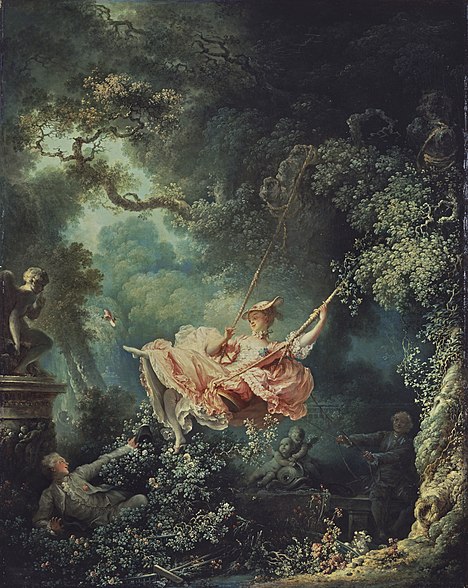 | |
Symphony in White, No. 2, also known as The Little White Girl is a painting by James Abbott McNeill Whistler. The work shows a woman in three-quarter figure standing by a fireplace with a mirror over it. She is holding a fan in her hand, and wearing a white dress. The model is Joanna Heffernan, the artist's mistress. Though the painting was originally called The Little White Girl, Whistler later started calling it Symphony in White, No. 2. By referring to his work in such abstract terms, he intended to emphasise his "art for art's sake" philosophy. In this painting, Heffernan wears a ring on her ring finger, even though the two were not married. By this religious imagery, Whistler emphasises the aesthetic philosophy behind his work.
Whistler created the painting in the winter of 1864, and it was displayed at the Royal Academy the next year. The original frame carried a poem written by Whistler's friend Algernon Charles Swinburne – titled Before the Mirror – written on sheets of golden paper. The poem was inspired by the painting, and to Whistler this demonstrated that the visual arts need not be subservient to literature. Though there are few clues to the meaning and symbolism of the painting, critics have found allusions to the work of Ingres, as well as oriental elements typical of the popular Japonisme.
Before the painting went on exhibition at the Royal Academy, Whistler pasted the poem written on gold leafs onto the frame. The idea of decorating a painting's frame with a poem was one Whistler had gotten from Rossetti, who had similarly pasted a golden paper with one of his poems on the frame of his 1849 painting The Girlhood of Mary. To Whistler, this poem underlined his idea of the autonomous nature of the painted medium. It showed that painters were more than mere illustrators, and that visual art could be an inspiration for poetry, not just the other way around.
White Rose in red rose-garden
Is not so white;
Snowdrops that plead for pardon
And pine for fright
Because the hard East blows
Over their maiden rows
Grow not as this face grows from pale to bright.
The writing of the poem was a rare and graceful tribute from the poet to the painter – a noble recognition of work by the production of a nobler one." Swinburne repaid the compliment: "...whatever merit my song may have, it is not so complete in beauty, in tenderness and significance, in exquisite execution and delicate strength, as Whistler's picture..."





